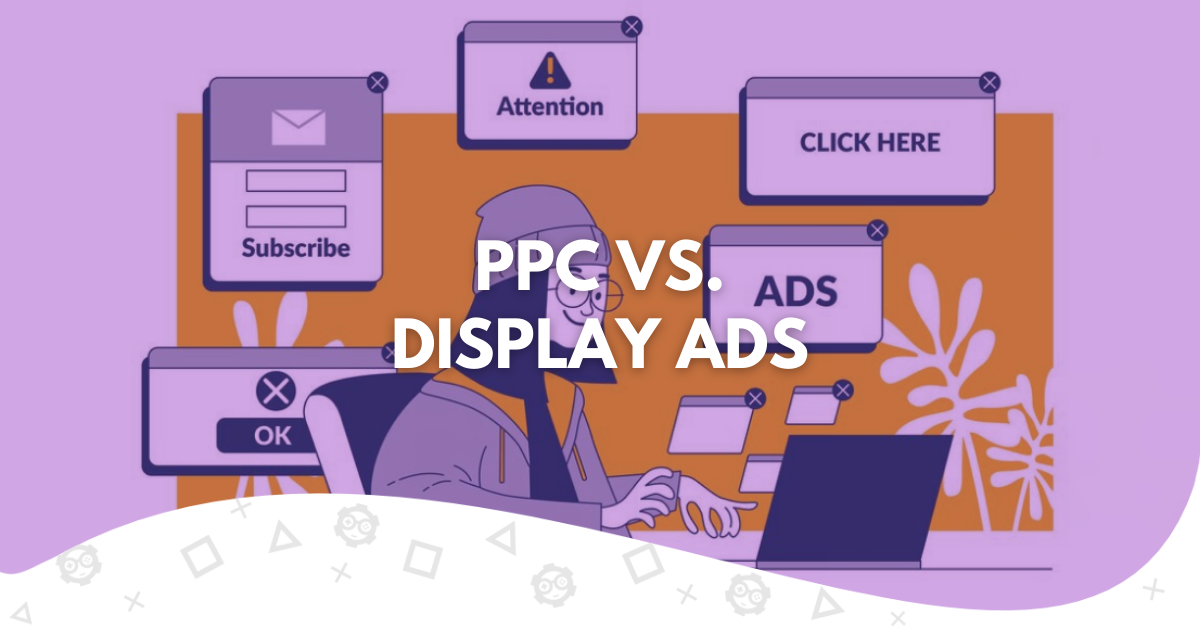Display advertising and PPC advertising are two clear-cut forms of online advertising that can look similar, but they have important differences in their perspective, approach, and objectives.
What is the best advertising approach? Who wins in a PPC vs. Display Ads scenario?
Both have their pros and cons and aim at different goals. Besides, adopting one of these two types of online advertising depends on the nature of your business, product, and your industry. In the subsequent sections, we will explain the main aspects of PPC and Display Ads and give you our verdict about what approach you should embrace.
What Is PPC?
PPC, Pay-per-Click, known as paid advertising or search advertising, is a class of advertising that facilitates you to reach prospects and potential customers through search engine results and social media feeds on platforms like Facebook.
In PPC, advertisers pay a publisher (search engines, social media platforms, etc.) every time a navigator clicks their ads. Search advertising represents a good way to allocate resources and leverage the budget in a good way, just paying for effective clicks.
How Does PPC Ads Work?
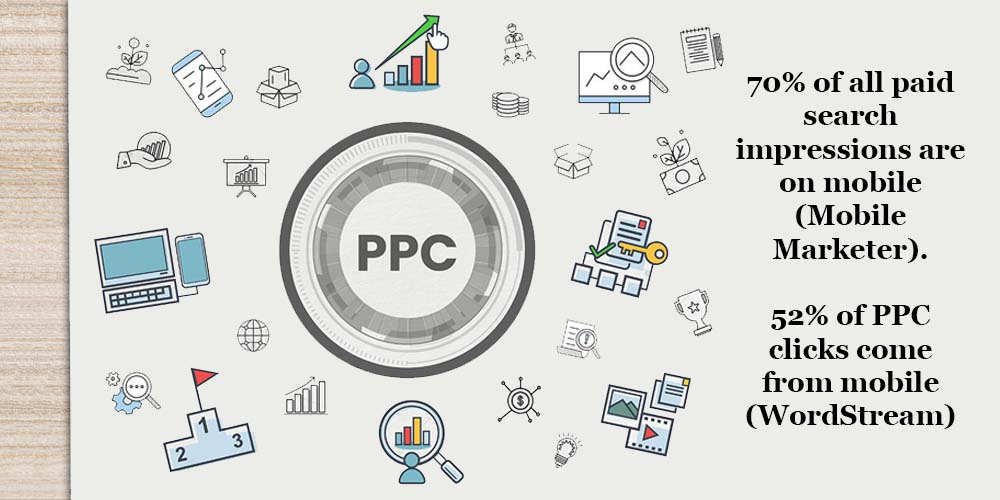
PPC campaigns mainly work through Google and social media by bidding on relevant keywords in the industry or product category you’re promoting.
When Google and social media platforms prompt you to create your search ads, they will ask you to create several titles and descriptions that will be used to articulate the ads. These titles and descriptions should be optimized according to SEO best practices for better engagement and to reach the potential audience interested in your product or service.
Excellent paid ads should contain the following information:
- The product’s brand and name.
- Value and benefits your product gives to the customer (lower prices than competitors, fast delivery, etc.)
- A call to action that encourages people to click the PPC ad.
- Other product categories that can resonate with your target audience.
This type of digital marketing should also be accompanied by an exquisite landing page, which is where potential customers will complete the purchasing process.
The Benefits of PPC
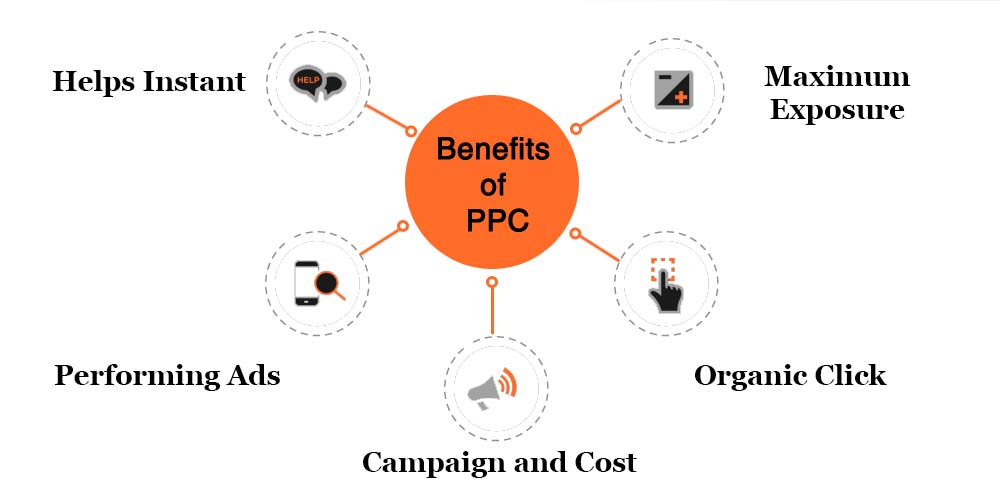
The pay-per-click model brings multiple benefits to marketers and advertisers looking to pick out target users based on specific search intent. Other essential benefits of PPC are the following:
- Customer acquisition. Since PPC ads will appear on the search engine results page, they are intended to entice users with a high purchase intent. These are users who boast a great chance to go through the purchasing funnel and acquire your product.
- Context of ads. Google ads offer a wider context of what your brand is and offers since users are looking for information related to your product or service using keywords directly linked to your brand. It means a search ad provides more context of what you offer and what users gain by clicking on the ad.
- Track campaign performance in real time. By using Google Ads and Google Analytics, you can measure and analyze your online ads in real time. Some of the most important metrics you should pay attention to are the number of impressions, clicks, and conversions.
- More accurate aiming. Search ads allow you to address people who are actively searching for data on your industry or products related to your business.
- Keyword targeting. Digital advertising works through keywords, which helps you focus on particular targets of your product and potential customers. For example, you can bid on “gaming” or “free games” keywords. People looking for these keywords will see your ads in the first place of the search results. However, the position also depends on the value that Google gives your ads.
What Are Display Ads?
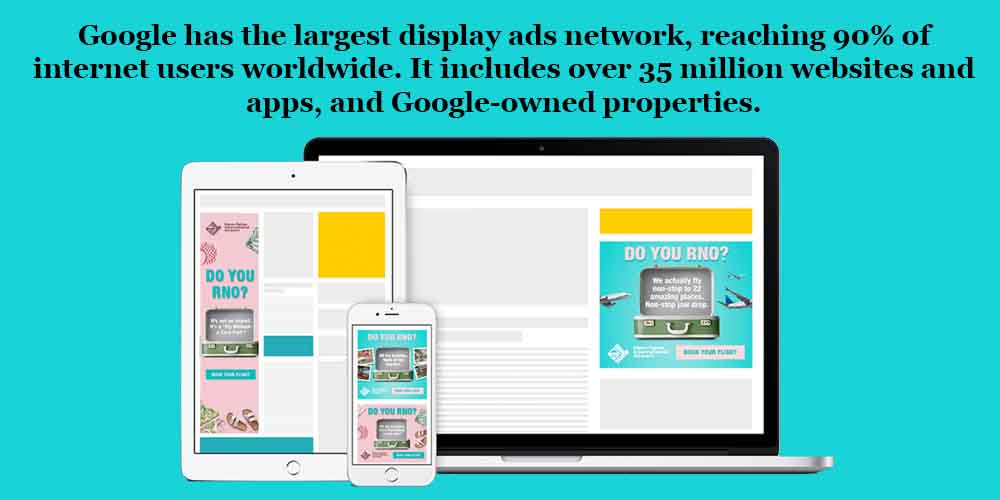
Display Advertising is a category of Internet advertising characterized by the use of banners or other visual elements to promote and encourage Internet users to click the ad and find out more about the product or service.
Have you seen the pop-up images that appear at the top, middle, or site of the website content promoting products or advertising information that could be of interest? They are the result of display advertising.
Display ads can be text, image, and video ads.
How Does Display Ads Work?
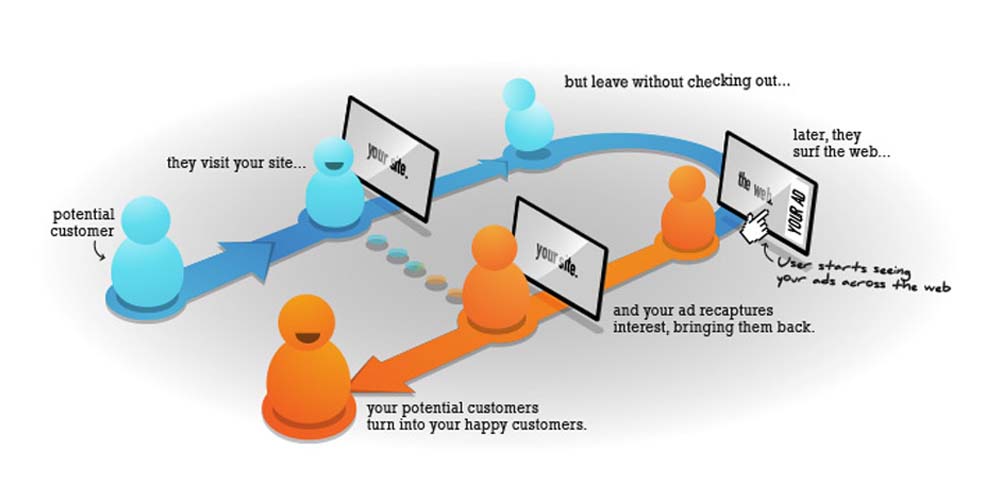
Display advertising works through Google and its Google Display Network, a huge set of thousands of websites – including specific Google websites like Google Finance, Gmail, Blogger, and YouTube – where your display advertisements can be displayed.
When you configure your display campaign in Google, the system will prompt you to type a series of phrases and upload images that will be displayed automatically in different combinations, depending on the placement of the website where they will be displayed.
Display ads are shown to a targeted audience, which means users that have shown a kind of interest in your product or industry or visited your website before.
The Benefits of Display Ads
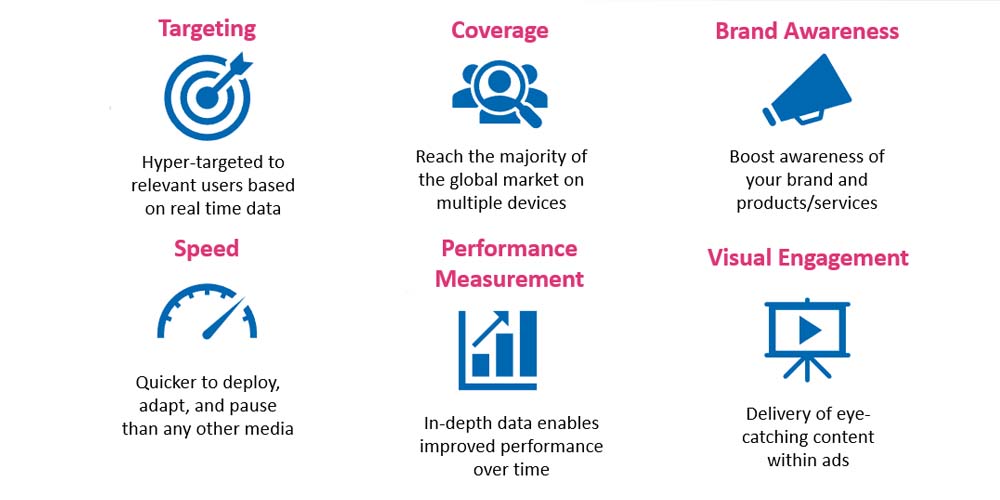
Display ads are great for specific businesses wanting to increase awareness and popularity among users interested in their brand and products. These businesses use displays as an alternative to traditional forms of advertising and cover new ad spaces.
- Brand awareness. Most of the time, and contrary to search ads or PPC, display advertisements are great for users aware of your brand or a particular product. This is why you can offer a promotion or generate a FOMO feeling that can show users what your brand is about.
- Retargeting. Display advertisements allow you to address people who have shown a previous interest in your brand or merchandise, i.e., previous buyers, newsletter subscribers, website visitors, etc. Retargeting means showing display ads to these people to remind them that your product can solve their needs.
- Visually appealing. You can create images in the editor software of your choice according to the guidelines and aesthetic of your brand and then upload them to the system for Google to create the ad. This situation gives you a huge control over the visual appeal of the banner. Besides, it entices even more people to click the ad.
- Behavioral targeting. Contrary to Pay-per-Click advertising, which addresses customers according to their keyword intent, display ads implement an advertising strategy based on customers’ behavior. It means its audience targeting focuses on users who show interest in your product or brand.
PPC vs. Display Ads – Key Differences
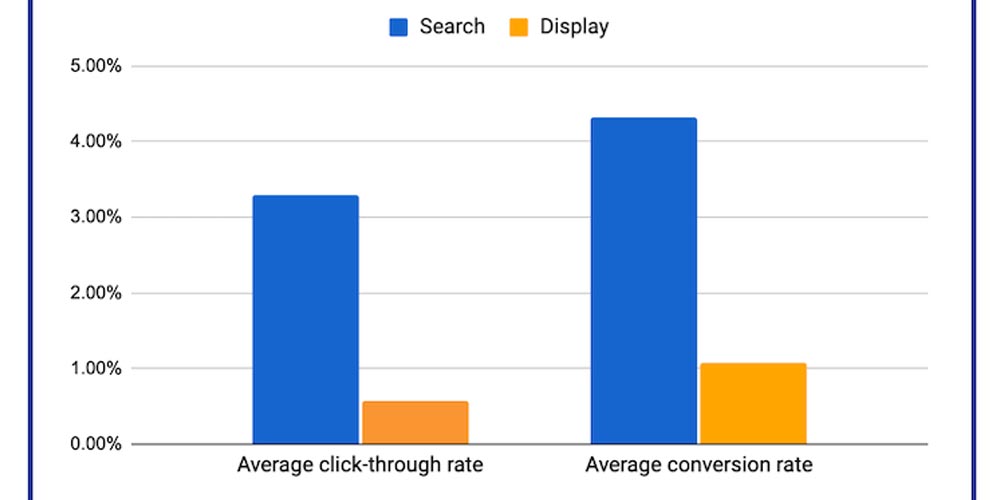
As you see in the image above, search ads boast better results when analyzing average click-through and conversion rates compared to banner ads. But beyond that, both PPC and display ads differ in other remarkable aspects we will discuss below.
- Ad Format and Placement
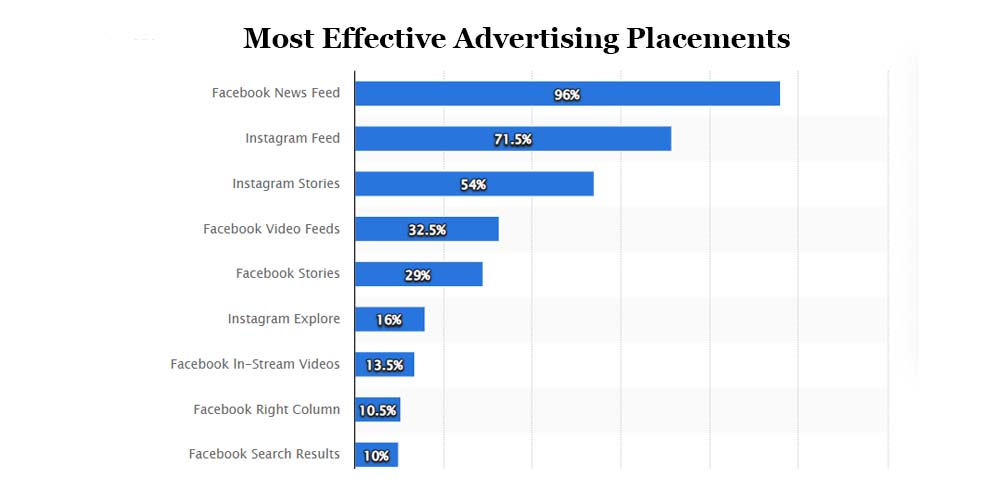
The format of PPC ads is very simple: it just includes a title and a description. However, they provoke a real impact on customers due to the relevant keywords they contain. Besides, PPC ads should appear in the first places in the SERPs, whether Google rates your content as really valuable for the customers.
Display ads, regardless of the type, have an assortment of formats and shapes. You can publish these ads on YouTube, websites, and social media. We would say that display ads are also social advertising since they spawn on multiple platforms, addressing a wide range of users. Besides, Google allows you to select the best placement for your ads while configuring the campaign.
- Targeting Options
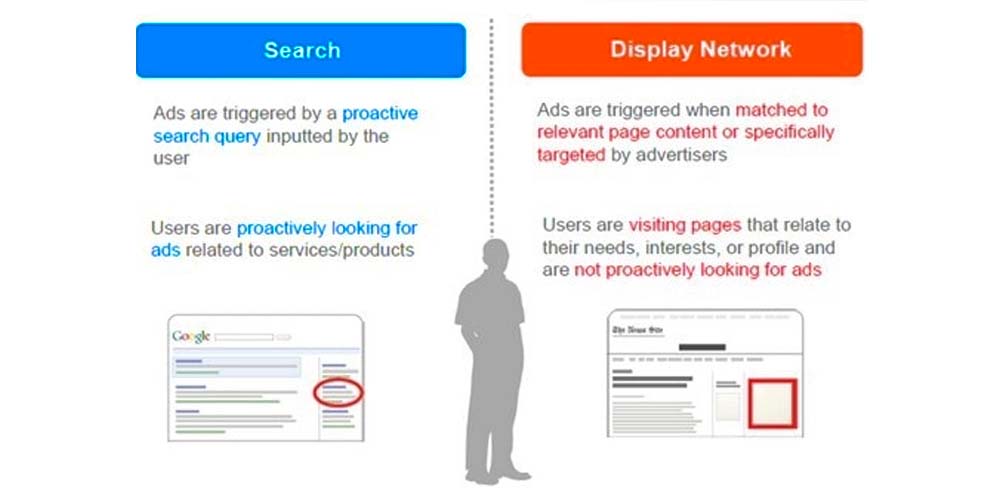
As we briefly mentioned earlier, PPC ads allow you to narrow targeting by using particular keywords that resonate with your target audience. Optimizing PPC through this method and other SEO strategies is relevant when looking to reach people interested in your content. Besides, Google puts at your disposal several options to delineate your target audience according to demographics and even exclude certain audiences and keywords by clarifying negative keywords.
Display ads aim at specific audiences that have shown a particular behavior that brings them closer to your content and product. This situation is the same for websites, YouTube, social media, and other Google services. This way, your brand boasts a good digital presence on several fronts.
- Awareness and Audience Reach
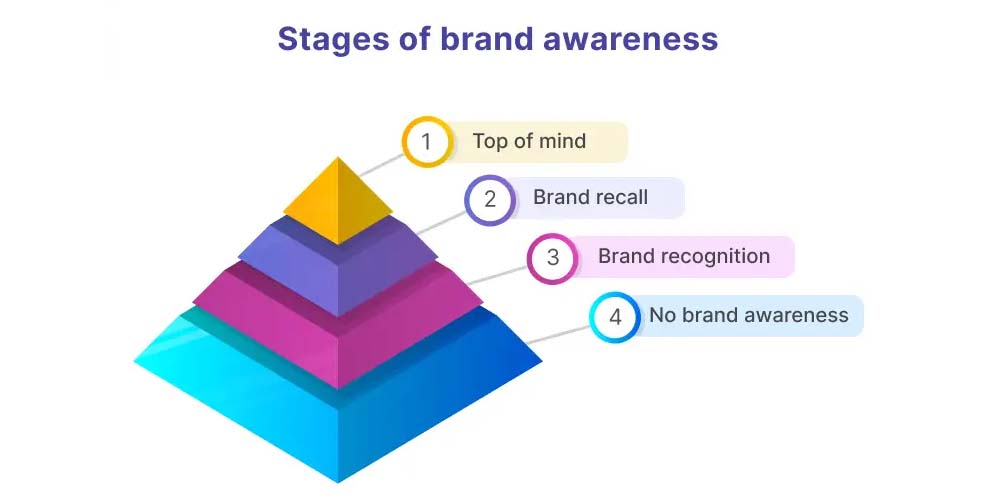
In a few words, display ads increase brand awareness, while PPC ads have better results regarding the acquisition of new leads and conversions. This situation makes display ads better for startups or small businesses that are just starting and need to increase their awareness and improve their position.
PPC campaigns through Google Adwords are a more suitable choice when providing a local service and wanting to target a naearby audience. You can entice customers to visit various websites – if you have more than one – landing pages or even your brick-and-mortar store. In this sense, reaching a global audience via displays is not the best for small businesses looking to reach their marketing goals.
- Ad Cost Structure
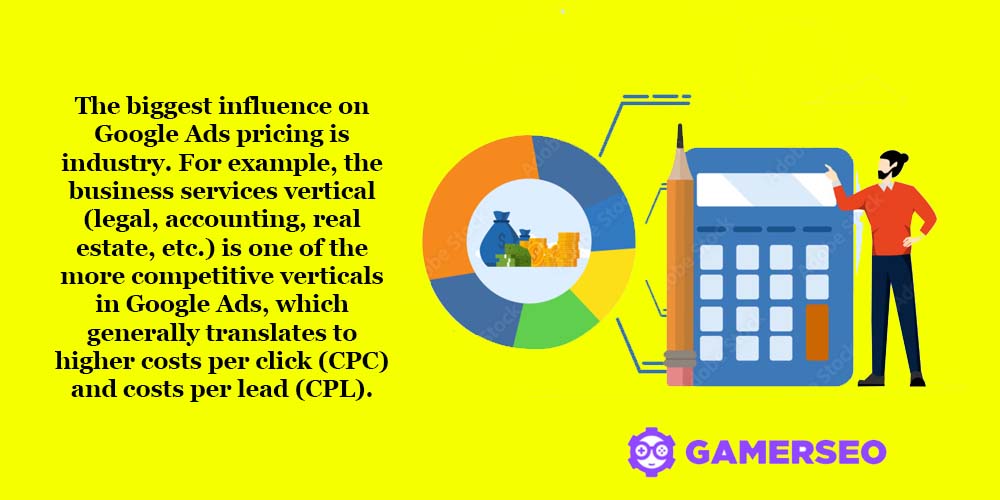
Since you have to pay per click, using a hyper-relevant ad on a high-volume website makes sense.
PPC advertising has a significant cost in most industries. For example, large-scale businesses have an average spend of USD$4 per click, while small and middle-sized companies spend around $2,59.
In a display ad campaign, you do not pay per click, but you pay fees to the search engine for each advertisement. In this sense, the fees you pay are minimal compared to the profit you can get from every click.
Still, PPC advertisement is a good strategy for small and middle-sized companies since they boast better management of budget and know exactly how many dollars to spend for a campaign.
Regarding effectiveness, with PPC, your campaign will work immediately as soon as you run the campaign. You can also bid for the best keywords for your industry. This practice allows you to target a particular market according to its purchasing power and intent, which is a very straightforward strategy.
With PPC, advertisements are targeted on a specific keyword or phrase. Besides, a series of factors determine the position of the ad within the website.
Display advertisements are targeted to a target audience.
- Ad Performance Metrics
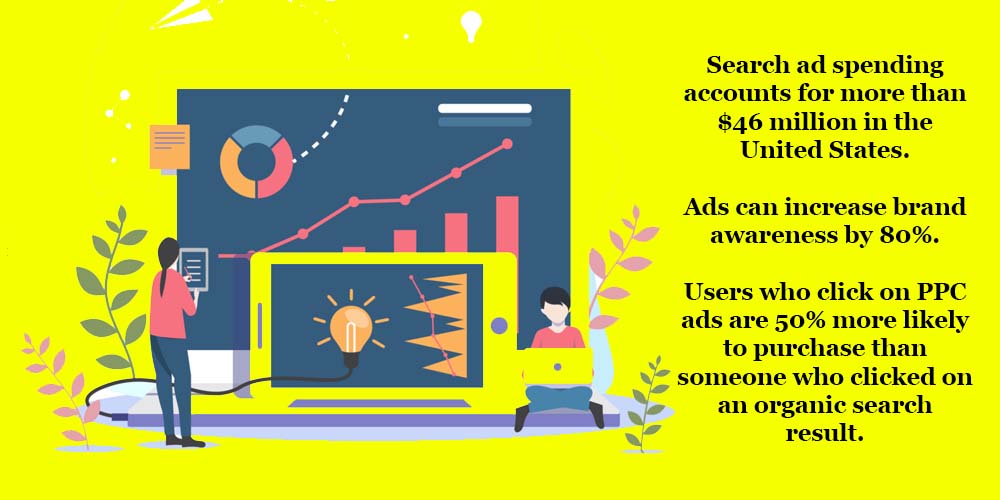
PPC performance metrics focus on measuring the performance and effectiveness of the search ads regarding actions and conversions. The main PPC performance metrics include the conversion rate, click-through rate (CTR), cost-per-click (CPC), and Return on ad Spend (ROAS).
Display Ads performance metrics focus on measuring reach, impressions, frequency, engagement rate, viewability, and brand awareness. Display ads are more tempted to generate a good impression of your brand or product in the right people and make your company well known among enthusiasts.
PPC and Display Ads Best Practices
When creating an entire online advertising campaign, we recommend advertisers and retailers use both strategies to conquer the ad space with reliable and appealing PPC and display ads. Here are other practices worth following.
Hire a Professional Marketing Agency
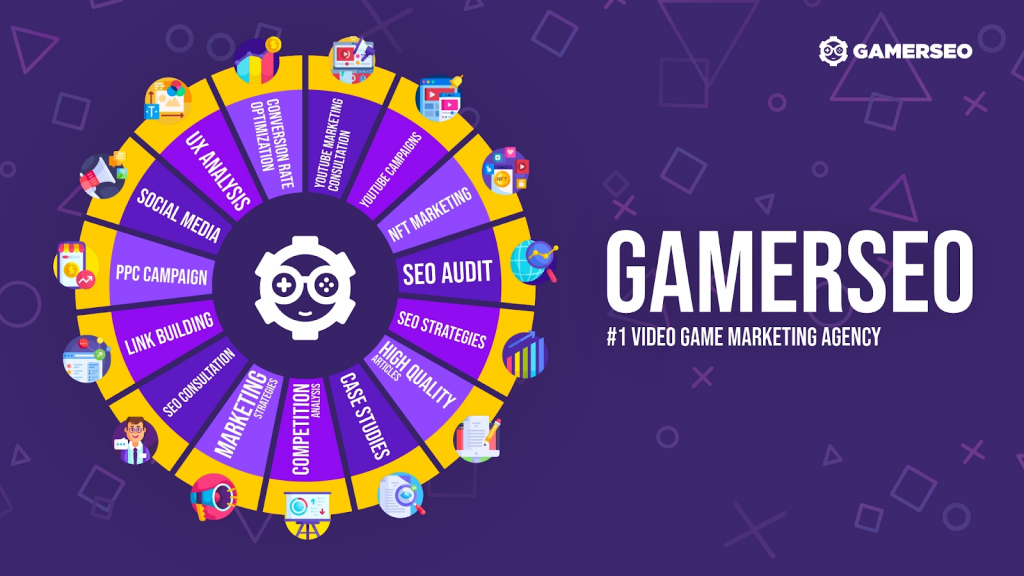
Working hand in hand with a professional digital marketing agency will facilitate many of the common problems that novice marketers and advertisers face every day. It means selecting the proper keywords, performing the right bids, and choosing the best target audiences.
In this scenario, GamerSEO is the best tech marketing agency you can work with to reach your audience, increase your brand awareness, and improve your impressions and conversion significantly. Contact us to start with your PPC or display ads strategy as soon as possible!
Apply, Measure, and Adjust Strategies
Whether you’re creating and implementing social media ads, search ads, display ads, or others, you should continuously measure results to check if you’re obtaining the expected results. If your strategy is not providing the expected outcomes, then you should change the approach.
Regarding display ads, you probably should choose the right ad format or modify the images you’re using. Often, the design and visual style are deciding factors of why the user clicks the ad.
In PPC, on the other hand, you should change titles and descriptions and consider bidding for different keywords. Study the competition and what specific keywords they are using. Maybe a modification in your web content or landing page would also be necessary.
Divide Your Budget to Use It in Both Strategies
If you have a small business, you probably have a limited budget for marketing and building brand awareness. If this is your case, bidding on displays is a good move to improve awareness and gain recognition through different websites. After this, you can advance to a pay-per-click approach, paying a search engine fee every time a user clicks an ad. This way, you will generate leads and more conversions by driving sales directly from search engines and users looking for a product or service like yours.
Conclusions
While PPC advertising is more focused on capturing intent-based search traffic and driving direct response, display advertising aims to create brand awareness, reach a broader audience, and generate interest. Both approaches have their advantages and can be utilized based on specific marketing goals, audience targeting requirements, and budget considerations.

A PPC specialist who started with organic social media. For several years, the core of his activities are:- Google Ads, Microsoft Ads, Meta Ads, TikTok Ads, Twitter Ads, Linkedin Ads. He has led campaigns with a global reach, e.g. for FootballTeam, G2A, ETOTO, as well as many smaller campaigns in the sports, construction and financial industries. Has full focus on ROAS. Privately, a fan of football, history of wars and Star Wars.

